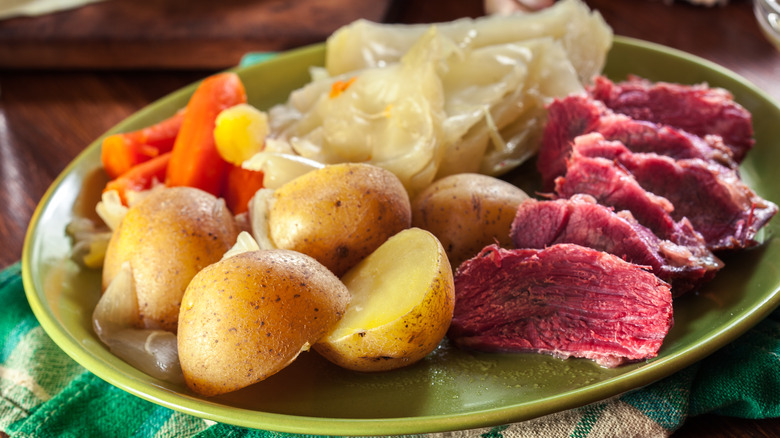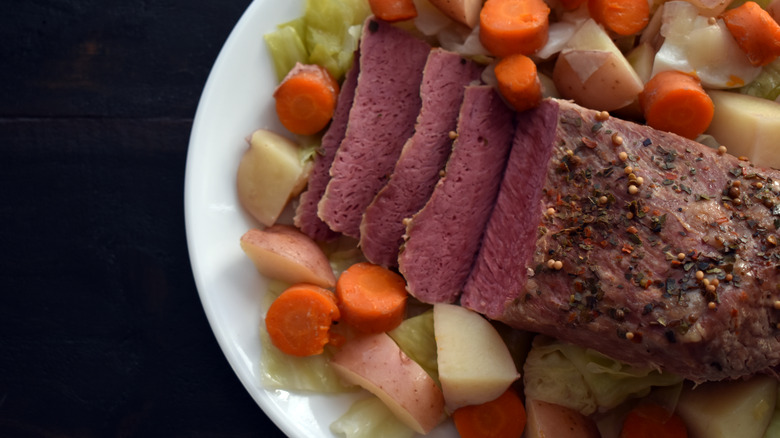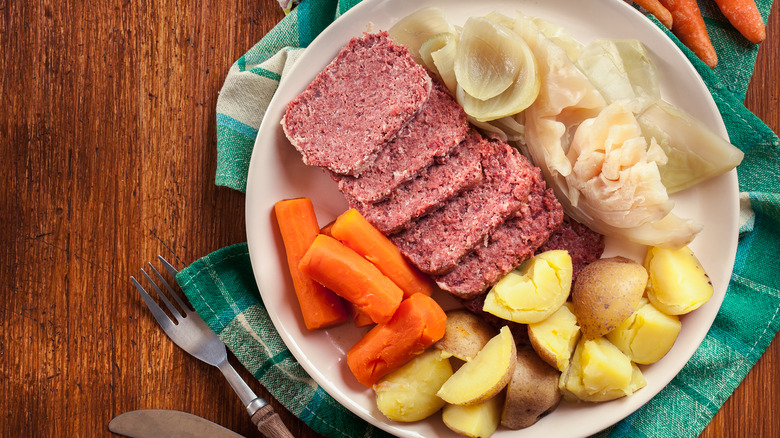Here's What Makes Up A Classic New England Boiled Dinner
New England's local food traditions are plentiful, but if you're not from there, you might not be familiar with the idea of "boiled dinner." Made up of a humble combination of meat (usually corned beef), cabbage, and a medley of root vegetables mixed together and simmered on the stovetop until fork-tender, this hearty meal is a classic that fills the stomach and warms the heart. It's extremely similar to the popular Irish-American dish corned beef and cabbage, though the St. Patrick's Day staple typically uses fewer root vegetables.
Part of the beauty of this dish is its customizability: The vegetables can vary widely depending on what's available and what's in season. Rutabagas, turnips, carrots, parsnips, potatoes, beets — throw them in the pot if you've got them. Even the meat, historically, can be different from corned beef, with some older cookbooks calling for anything from salt pork to chicken. But at its core, New England boiled dinner has the same few elements, and though it's a simple meal, it's anything but ho-hum.
The history of the boiled dinner
It's no surprise that the boiled dinner's origins come from Ireland. Ireland was a hub of salted beef production in the 17th Century, making the dish extremely popular and inexpensive in the area; ham would have also been an inexpensive, alternative option. Corned beef gets its name from the "corns" of rock salt the meat is brined in. Irish immigrants most likely took the dish overseas with them when settling in the New England area, and the rest is history.
This was originally a dish often made by people who were struggling financially, as the hearty and inexpensive vegetables helped to stretch the smaller cuts of meat. And the leftovers can be transformed into a dish all its own. Red flannel hash, made from the uneaten remains of a boiled dinner, consists of chopped-up leftovers sizzled in a skillet with a dash of cream and a fried egg on top.
A humble dish, made at home
Making this classic New England meal at home is simple, and made even simpler with the invention of the modern-day slow cooker. Slow cookers are perfect vessels to cook low-and-slow simmered dishes like this one without having to heat up the stovetop. Among the best slow cooker recipes, simply cook the corned beef (and add-in spices) in your slow cooker with water for four hours on high. Add the veggies in with the liquid and cook for an additional hour (or for two if you switch the temperature to low).
No slow cooker? You can still simmer this dish on a stovetop the old-fashioned way; simply bring the meat to a boil, then lower the heat and simmer, covered, for three hours. Add the veggies, turn the heat up, and cook for an extra 10-20 minutes or until everything is fork-tender and delicious. No need to wait for a holiday — have this dish any night of the week and enjoy!


